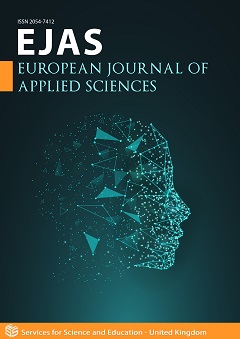Mid-East Cultures With Common Roots Imply Reconstructed Common Origin Myth
DOI:
https://doi.org/10.14738/aivp.96.11386Keywords:
: Intersection of science and mythology, Intersection of ancient history and mythologies, Comparative mythology, Genesis and mid-east origin myths, Sumerian and Egyptian myths, Chinese and Hindu mythsAbstract
The relation between the most ancient civilizations in the mid-east (aside from obvious political ones) is often understated. However, non-obvious connections can have spiritual implications not easily recognized. This paper surveys the cultures of the five earliest civilizations (Sumerian, Egyptian, Chinese, Hindu, and Hebrew) from a broader perspective for a more unified picture of the past than is at first apparent. Things that might lead to cultural commonality – geographic proximity, trade relations, or political affiliations – can disseminate ideas that are later assimilated into established tradition. However, the degree of linguistic closeness of different groups might also be an indicator of earlier common heritage and tradition that evolved during isolation following migration dispersal with time and distance. Evidence of this common root can hint at a unified base for their origin mythologies. The older unifying background is considered here, and comparisons of their mythic traditions are used to reconstruct a hypothetical “Common Origin Myth”. The outline of the reconstruction is based on Genesis 1: because, that can be reconciled with the modern scientific record, indicating an ancient “common source” possessed historical truth – not “just” symbolic analogy.
References
. Ruhlen, M., The Origin of Language. 1994, New York NY, USA: John Wiley & Sons Inc., p. 142, 143, 192.
. Cavalli-Sforza, L.L., Menozzi, P. and Piazza, A., The History and Geography of Human Genes. 1994, Princeton, NJ, USA: Princeton Univ. Press, p. 158-254.
. Renfrew, C., Archaeology and Language. 1987, New York, NY, USA: Cambridge Univ. Press, p. 47.
. Mascoti, S., The Face of the Ancient Orient. 2001, Mineola, NY, USA: Dover Pub. Inc, Chapters 2,4,7.
. Kramer, S. N., The Sumerians, Univ. 1963, Chicago, IL, USA: Chicago Univ. Press.
. Cotterall, A., ed., Penguin Encyclopedia of Ancient Civilizations. 1980, New York, NY, USA: Penguin Books.
. Lawler, A., "Indus Collapse: The End or the Beginning of an Asian Culture?", Science, 320 (2008): 1281-1283.
. Waddell L.A., Makers of Civilization in Race and History, Facsimile of 1929 Edition. 2012, Whitefish, MT, USA: Kessinger.
. DeLacouperie, T., The Western Origins of the Early Chinese Civilization. 1894, London, UK: Asher & Co.
. Hooke, S. H., Middle Eastern Mythology. 1963, New York, NY, USA: Penguin Books, (Dover edition, 2004).
. Kramer, S. N., Sumerian Mythology. 1972, Philadelphia, PA, USA: Univ. Pennsylvania Press.
. Dalley, S., Myths from Mesopotamia. 1989, New York, NY, USA: Oxford Univ. Press, Inc.
. Budge, E. A.W., Egyptian Literature, Vol I: Legends of the Egyptian Gods. 1912, London, UK: Kegan, Paul, Trench, Trubner & Co. Ltd, (Dover Edition, 1994).
. Giannini, J. A., “Catastrophic Geological Event Illuminates Egyptian Kings List Anno Mundi Reference”, European J. of App. Sci., 9(6) (2021): 89-101.
. Rohl D., Legend - the Genesis Civilization. 1998, London, UK: Arrow Books Limited.
. Lawler, A., "Boring No More, a Trade-Savvy Indus Emerges", Science, 320 (2008): 1276-1281.
. Doniger, W., trans., Rig Veda: An Anthology. 1981, New York, NY, USA: Penguin Books.
. Roberts, J. M., ed., The Penguin History of the World. 1992, New York, NY, USA: Penguin Books.
. Lawler, A., "Beyond the Yellow River: How China Became China", Science, 325 (2009): 930-934.
. Etienne, A. and DeLacouperie, T., The Language of China Before the Chinese. 1887, London, UK: David Nutt.
. Legge, J., trans., The Shu King or Book of Historical Documents, Facsimile of 1897 First Ed. 2012, Whitefish, MT, USA: Kessinger.
. Legge, J., trans., The I Ching, 1963, New York, NY, USA: Dover Pub.
. Birrell, A., Chinese Mythology, 1993, Baltimore, MD, USA: Johns Hopkins Univ. Press.
. Wilhelm, R., trans., The Tao Te Ching. 1989, London, UK: Arkana Penguin Books.
. JPS Hebrew-English Tanakh. 2000, Philadelphia, PA, USA: The Jewish Publication Society.
. Sayce, A. H., The Religions of Ancient Egypt and Babylonia. 1902, Edinburgh, Scotland: T. & T. Clark.
. Johnson, G. H., “Genesis 1 and Ancient Egyptian Creation Myths”, Bibliotheca Sacra, 165 (April-June) (2008): 178-194.
. Giannini, J. A., “Dual-Time Concept and Mythology Illuminate Intersection of Science and Religion”, Int. J. Mod. Soc. Sci., 8(1) (2019): 42-62.
. Littleton, C. S., The New Comparative Mythology: An Anthropological Assessment of the Theories of Georges Dumezil, 1982, Berkeley, CA, USA: Univ. California Press.
. Witzel, M., “Creation Myths”, Myths and the Disciplines Conference, Leiden (2003).
. Campbell, J., ed., Hull, R. F.C., Trans, The Portable Jung. 1976, New York, NY, USA: Penguin Books.
. Erkes, E., trans., Ho-Shang-Kung's Commentary on Lao-Tse. 1950, Askona, Switzerland: Artibus Asiae Pub.
. Radhakrishnan, S. and Moore, C. A., A Sourcebook in Indian Philosophy. 1957, Princeton, NJ, USA: Princeton Univ. Press.
. Feng, G and English, J., trans., The Tao Te Ching. 1972, New York, NY, USA: Vintage Books.
. Giannini, J. A., “Selected Mid-East Myths Provide Basis for Common Origin Myth Reconstruction”, ResearchGate #356788409 (2021): 21 pages.
Downloads
Published
How to Cite
Issue
Section
License
Copyright (c) 2021 Judith Giannini

This work is licensed under a Creative Commons Attribution 4.0 International License.






